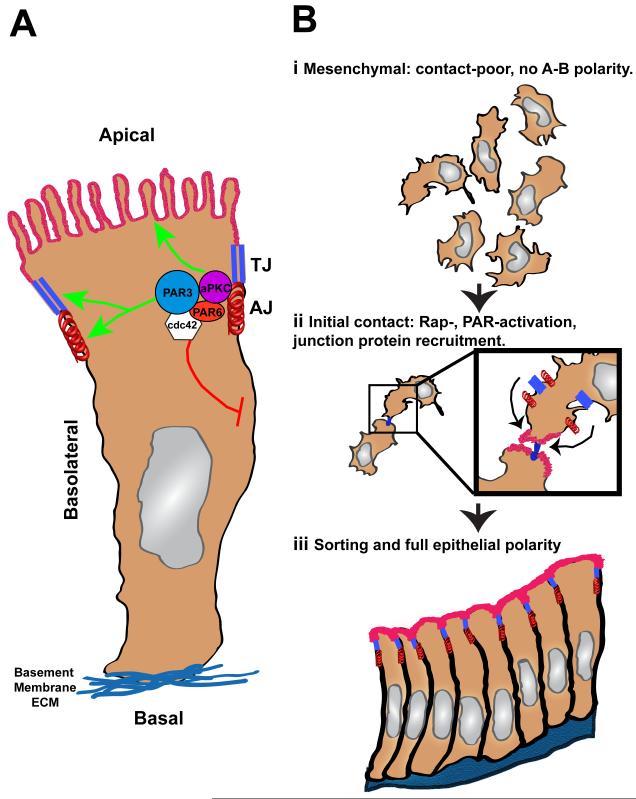Figure 1.
Overview of epithelial polarity. (A) Polarized epithelial cells possess apical-basal polarity, in which an apical membrane (red) is separated from the basolateral and basal membranes (blue) by TJs (parallel blue rectangles) and AJs (red spring). While AJs and TJ represent cell-cell contact sites, the basal domain makes cell-matrix contacts through integrin receptor attachment to the basement membrane. The PAR complex (Pard3, Pard6, aPKC, cdc42) facilitates apical-basal polarity by promoting apical membrane specialization and TJ/AJ maturation (green arrows). The PAR complex also possesses inhibitory activities that limit the size of the basolateral membrane. (B) Primordial cell contacts promote MET. (i) Initially, epithelial cells in the mesenchymal state lack apical-basal (A-B) polarity and strong cell-cell contacts. (ii) Primordial contacts through adhesion receptors, like the nectins or JAMs, initiate a cascade of events, including Rap1 and PAR complex activation, that transform the primordial cell contacts into the nucleation site for TJ and AJ. (iii) Activation of the Rap1 and PAR complex signaling cascades, in cooperation with polarized trafficking events, promotes eventual full epithelial polarization.

